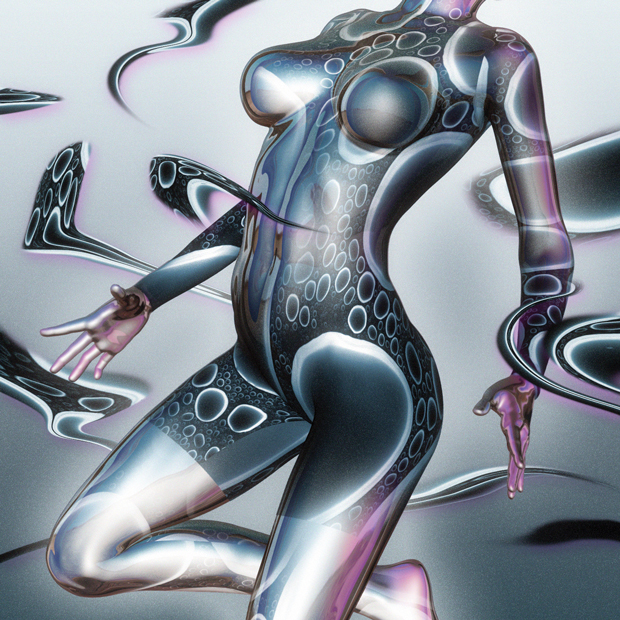One woman’s crusade to change the course of clothing
From the magazine: ISSUE 87, August/September 2013
When the Wright Brothers invented the airplane, they dressed up in three-button suits; now we’ve got guys making drones the size of mosquitos, and when they want to look sharp, they wear practically the same thing. Isn’t it time that clothes got with the times? For some ideas, we’ve turned to Dr. Sabine Seymour, a hybrid academic and entrepreneur who specializes in combining textiles with science and technology. Director of the Fashionable Technology Lab at Parsons The New School for Design and chief creative officer at Moondial, doing research, development and consulting for companies like DuPont, Seymour doesn’t traffic so much in real products as she does in ideas for ones 80 years from now. “Imagine” seems to be her favorite verb. “There needs to be a relationship between the human body, the garment you wear and the actual space around you,” she says, before launching into a description of a Wonka-like closet of futuristic clothes: whole garments that puff out to protect you when someone gets too close, running shoes that shout encouragement when you slow down. Here, she offers a glimpse at what your grandkids will wear, and how we’ll get there.
On Moondial’s website, you write that skin is a metaphor for computational fashion. What does that mean? Think about what your skin can do. Now imagine textiles as a second skin. Your skin tans under UV light, and the textile changes color, too. Your skin changes shape, the hairs stand up. It absorbs fluctuations in body temperature. If it becomes humid, it opens its pores, it transfers heat and sweats. Your skin is a reflection of your inner house. It’s a communicator. Imagine your textiles being the same. During the summer, when you’re drenched from sweat and going into the cold subway car, what if the garment understands, Hey, we need to absorb these changes and protect this person by cooling us or heating us when it is required?
Who is leading the way? Mass-market fashion or high-end designers? A sneaker company can pretty much do everything in the world. They are at the forefront. For them, in-house development is a huge endeavor: they’ve got everyone from a physicist to a chemist to a sports scientist to a textile designer to an industrial designer to a programer who understands code. Then their product trickles down to the consumer. Fashion houses are slower to develop, because they don’t have those high-rolling, multimillion-dollar football stars. They don’t have the same understanding of technology or chemistry or physics, and that’s why we have the myth that wearable technology is ugly and that nobody really needs it.

“There needs to be a relationship between the human body, the garment you wear and the actual space around you.”
How will 3D printing change things? With 3D printing, we can get back to more personalized and localized production. Imagine you walk into a scanner that’s almost like a car wash. You get scanned, and your data is all there. Then we’ll have the ability to produce on the fly—the only thing you will need to do is choose the type of garment you want, from which designer, which color you like, or whatever it might be. You’ll still need to have that craftsman that actually takes that garment and polishes it off, puts it through tests to make sure everything’s fine—I envision that as being like an old-school tailor. I’m not saying that this will be the only way, and the machines are not there yet, but trust me, they will be.
Is something so high-tech also sustainable? Absolutely, because you can give garments more longevity. Imagine we produce one outfit that can actually change according to your input. Visually, for example, it changes patterns, it changes colors; it becomes warmer, it becomes cooler. And the designs you can program in are still being curated and updated by fantastic designers, so you don’t lose the fashion. Instead of buying a cool new outfit that you’ll only wear once, you customize the same one over a much longer period of time. Maybe you don’t even have to wash it. If it does all these things, you won’t necessarily need to buy new clothes.
What are the social implications? Some kind of fashionable utopia? That’s why this is absolutely such a cool space. We worked on a project looking into backpacks for Kenyan school kids who walk a long time from home to school and back. They can actually recharge the backpack so that during the night, it can become a source of light because they do not have electricity. The backpack has the ability to be a heating blanket, too. Or you can have textiles that can function as rechargeable tents, for example, so they can become autonomous shelters that can help in basically any rescue situation.
What comes next? Over the next three to five years, we will see an advancement in soft computation—we need a soft circuit, we need a soft sensor, we need things that can be really embedded in a textile without the wearer even being aware of it. Basically everything that is rigid now, we’ll try to make soft. We need to improve power consumption for things like the Bluetooth, too. So it has to be soft, it has to be able to use less energy, and for god’s sake, let’s make it look good.
